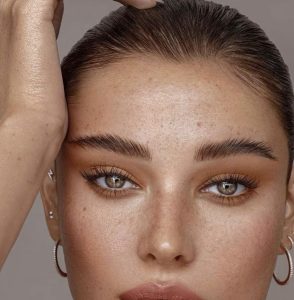
Why High-Resolution Artwork Improves Digitizing Services for Embroidery
In embroidery, the quality of the final stitched design depends heavily on the quality of the original artwork. Even the most advanced digitizing services for embroidery can’t fully compensate for poor-quality images. High-resolution artwork provides the clarity, detail, and accuracy needed to create stitch files that translate perfectly to fabric.
This blog explains why high-resolution designs are essential, how they impact the digitizing process, and tips for preparing your artwork for embroidery.
What is High-Resolution Artwork?
High-resolution artwork refers to images with more pixels and detail—generally 300 DPI (dots per inch) or higher. In embroidery, this means:
-
Sharp edges
-
Clear lines
-
Distinct color boundaries
Low-resolution images often appear pixelated or blurry, making them difficult to digitize accurately.
Why Resolution Matters in Embroidery Digitizing
1. Preserves Fine Details
Small text, intricate patterns, and subtle design elements are only visible in embroidery if they are clear in the original image. High-resolution files allow digitizers to map these details precisely.
2. Improves Stitch Accuracy
Digitizing software converts image details into stitches. If the artwork is blurry, the software (and digitizer) may misinterpret shapes—leading to distorted embroidery.
3. Enhances Color Separation
Embroidery digitizing often involves selecting specific thread colors to match the design. High-resolution images help clearly define color boundaries, reducing errors.
4. Reduces Redrawing Time
Low-quality images often require extensive cleanup or complete redrawing before digitizing, which adds time and cost to the project. High-resolution images speed up the process.
5. Ensures Scalability
High-resolution files can be resized without losing quality, making them more versatile for various garment sizes and embroidery placements.
Common Problems with Low-Resolution Artwork
-
Pixelation – Jagged edges that lead to uneven stitches.
-
Blurry Lines – Causes design outlines to lose definition.
-
Merged Colors – Difficult for digitizers to separate accurately.
-
Loss of Small Details – Thin lines or small text may disappear entirely.
Best File Formats for Embroidery Digitizing
For digitizing services for embroidery, the most commonly preferred formats include:
-
Vector Files (AI, EPS, SVG) – Best for scalability and clarity.
-
High-Resolution Raster Files (PNG, JPG, TIFF) – At least 300 DPI for clean detail.
-
PDFs – If they contain embedded vector artwork.
Tips for Preparing High-Resolution Artwork
-
Start with the Original File – Avoid sending screenshots or compressed images.
-
Use Vector Artwork – Scales without losing quality.
-
Check DPI – Ensure images are at least 300 DPI for embroidery.
-
Simplify When Needed – Remove unnecessary background elements that won’t translate well to stitching.
-
Communicate with the Digitizer – Share garment type, fabric, and intended size for best results.
The Digitizing Process with High-Resolution Artwork
When provided with clear, high-quality artwork, digitizers can:
-
Assign precise stitch types for different design sections
-
Maintain correct proportions and shapes
-
Ensure accurate placement of small elements
-
Produce cleaner, faster stitch-outs with minimal revisions
This leads to embroidery that closely matches the original vision.
Conclusion
High-resolution artwork is the foundation of successful embroidery. For digitizing services for embroidery, starting with clear, detailed images means fewer errors, faster turnaround, and higher-quality stitched results. Whether you’re a small business creating branded apparel or an individual ordering a custom piece, investing in high-resolution artwork ensures your embroidery looks professional, sharp, and long-lasting.
FAQs
Q1: What resolution is best for embroidery artwork?
300 DPI or higher is ideal for most embroidery projects.
Q2: Can low-resolution images still be digitized?
Yes, but they may require redrawing, which can increase cost and turnaround time.
Q3: Are vector files always better than raster images?
Yes, vectors are scalable and retain clarity at any size, making them ideal for digitizing.
Q4: Will high-resolution images make embroidery more expensive?
Not necessarily—high-res images can reduce editing time, sometimes lowering the cost.
Q5: Can I take a photo of my design and send it for digitizing?
Yes, but make sure it’s high resolution, well-lit, and taken from a straight angle for accuracy.





